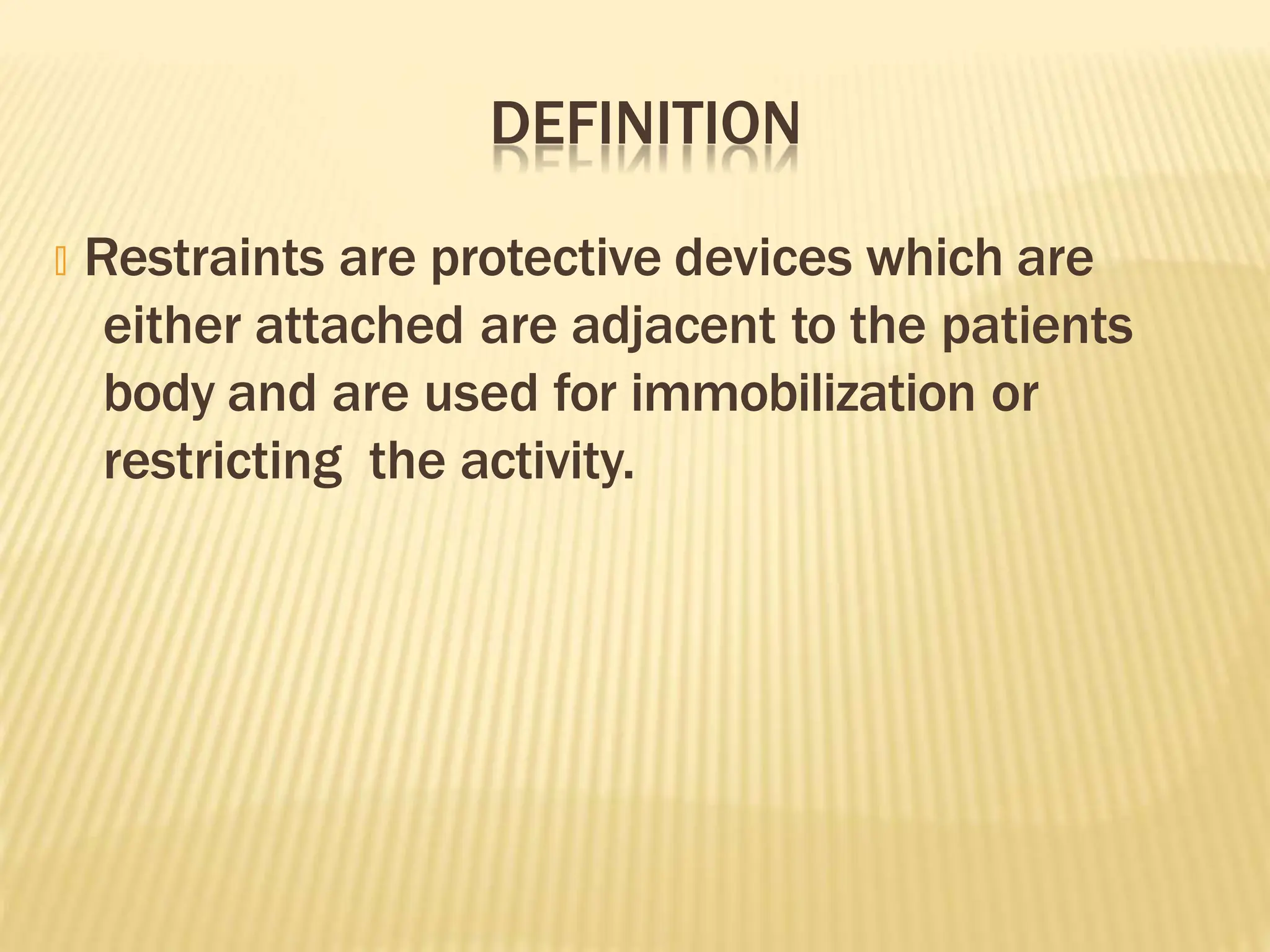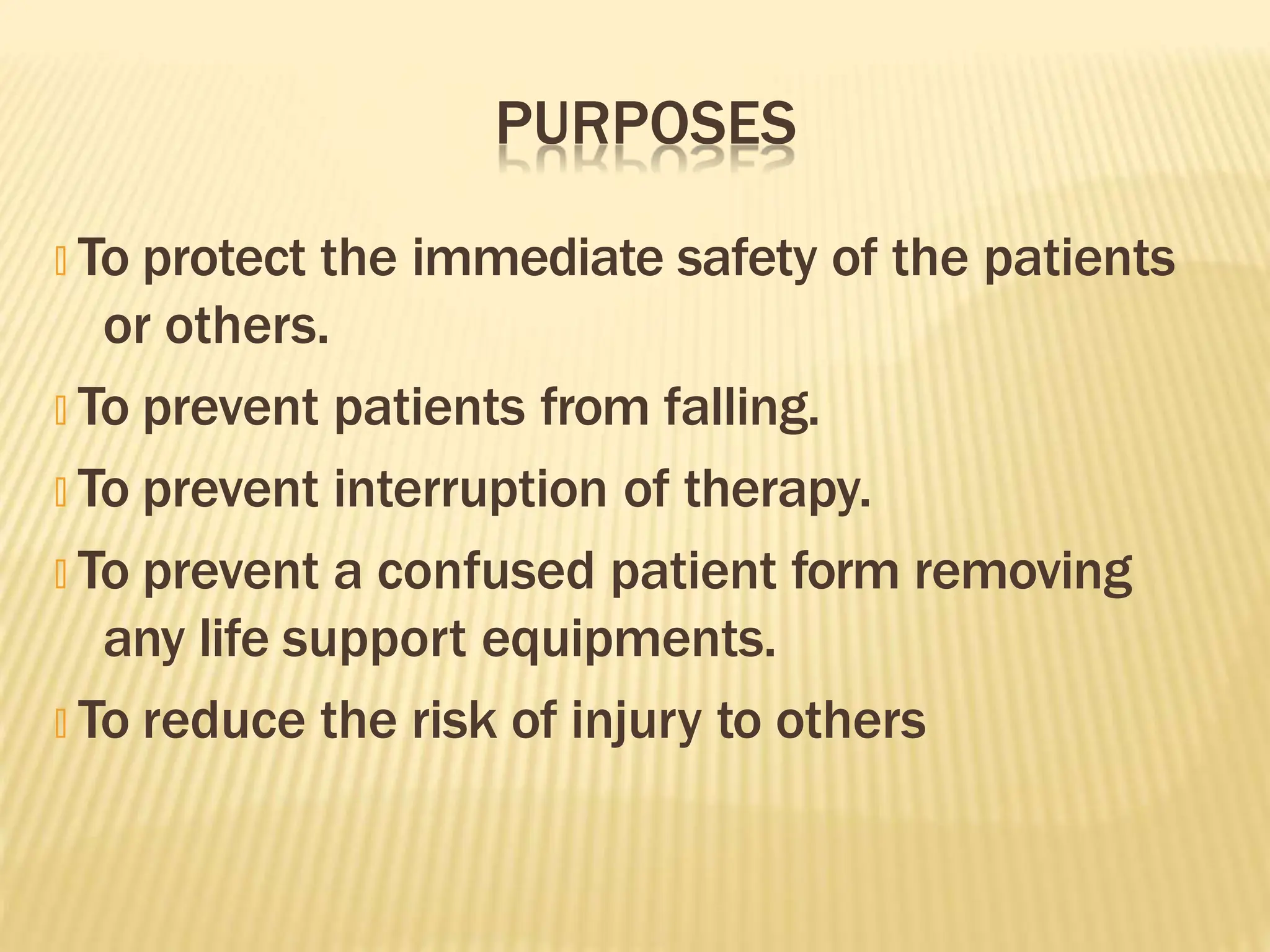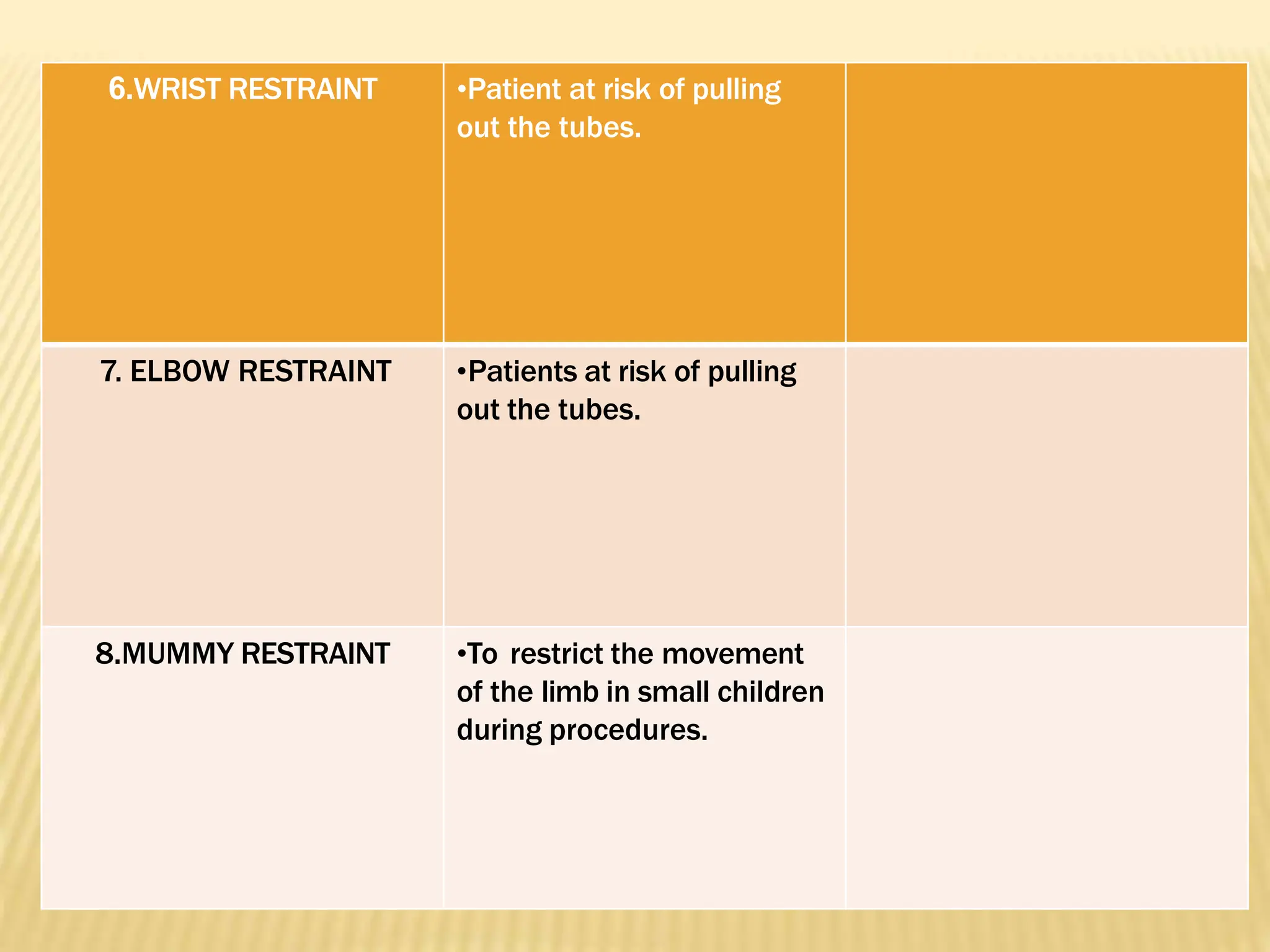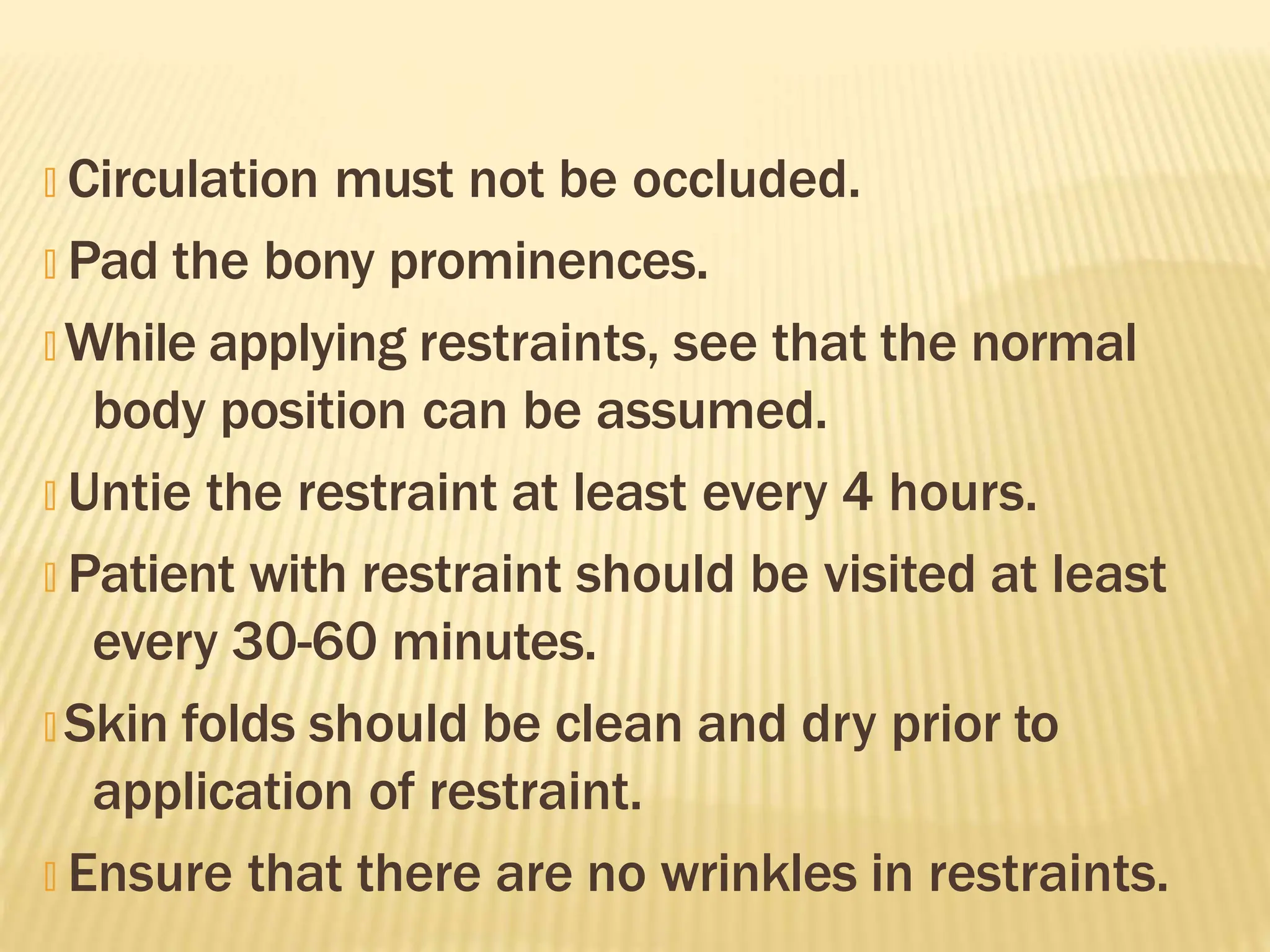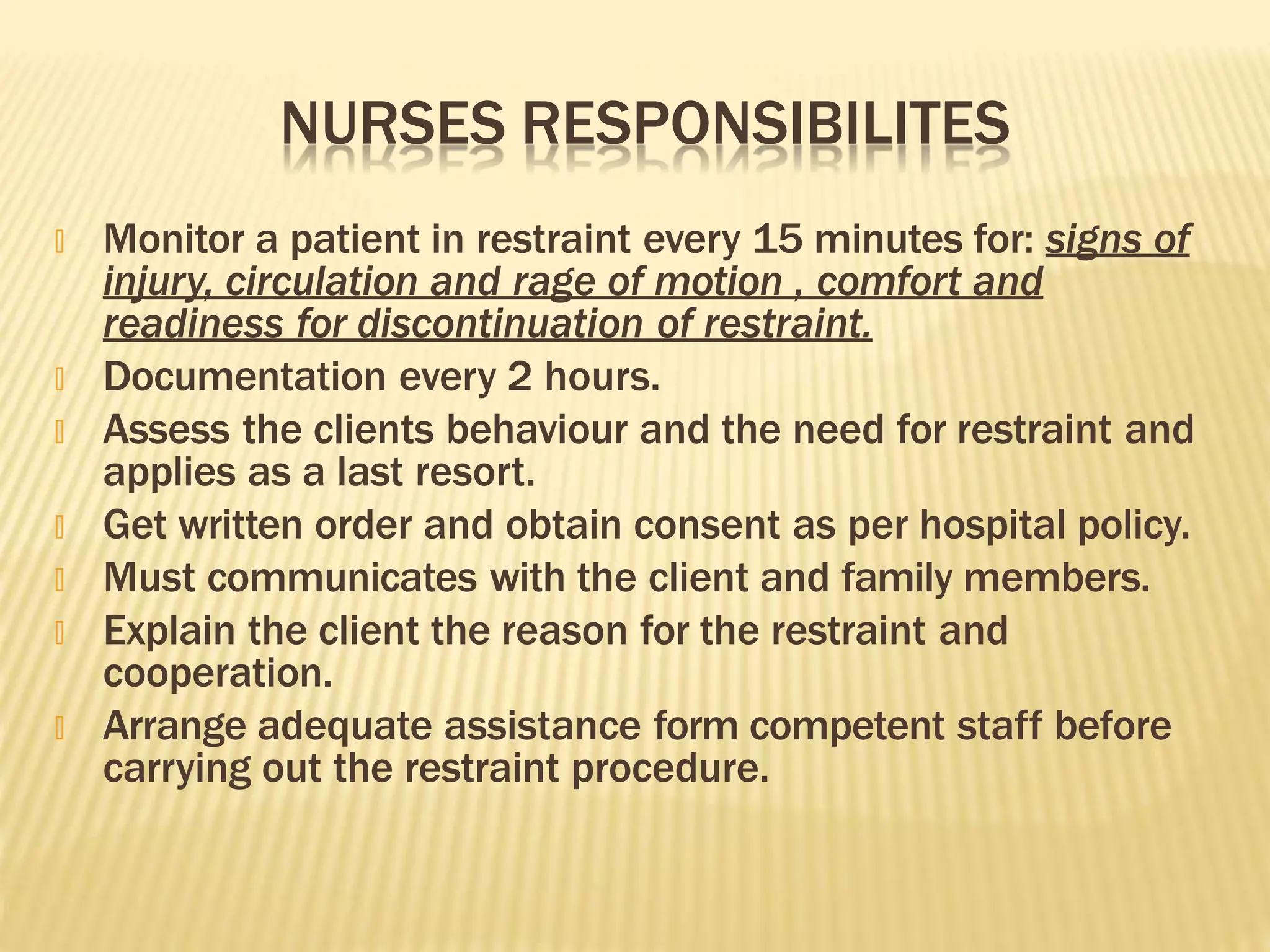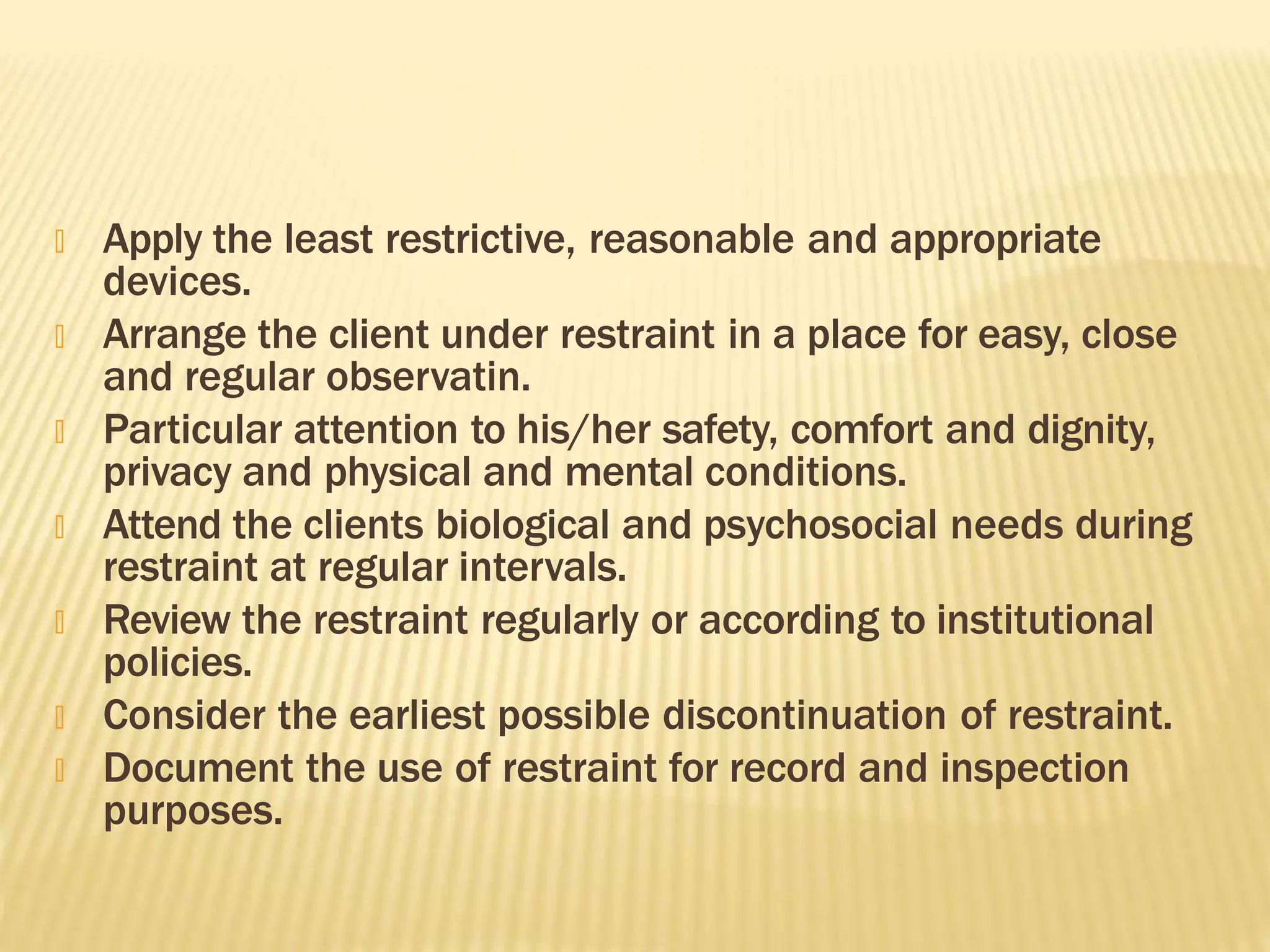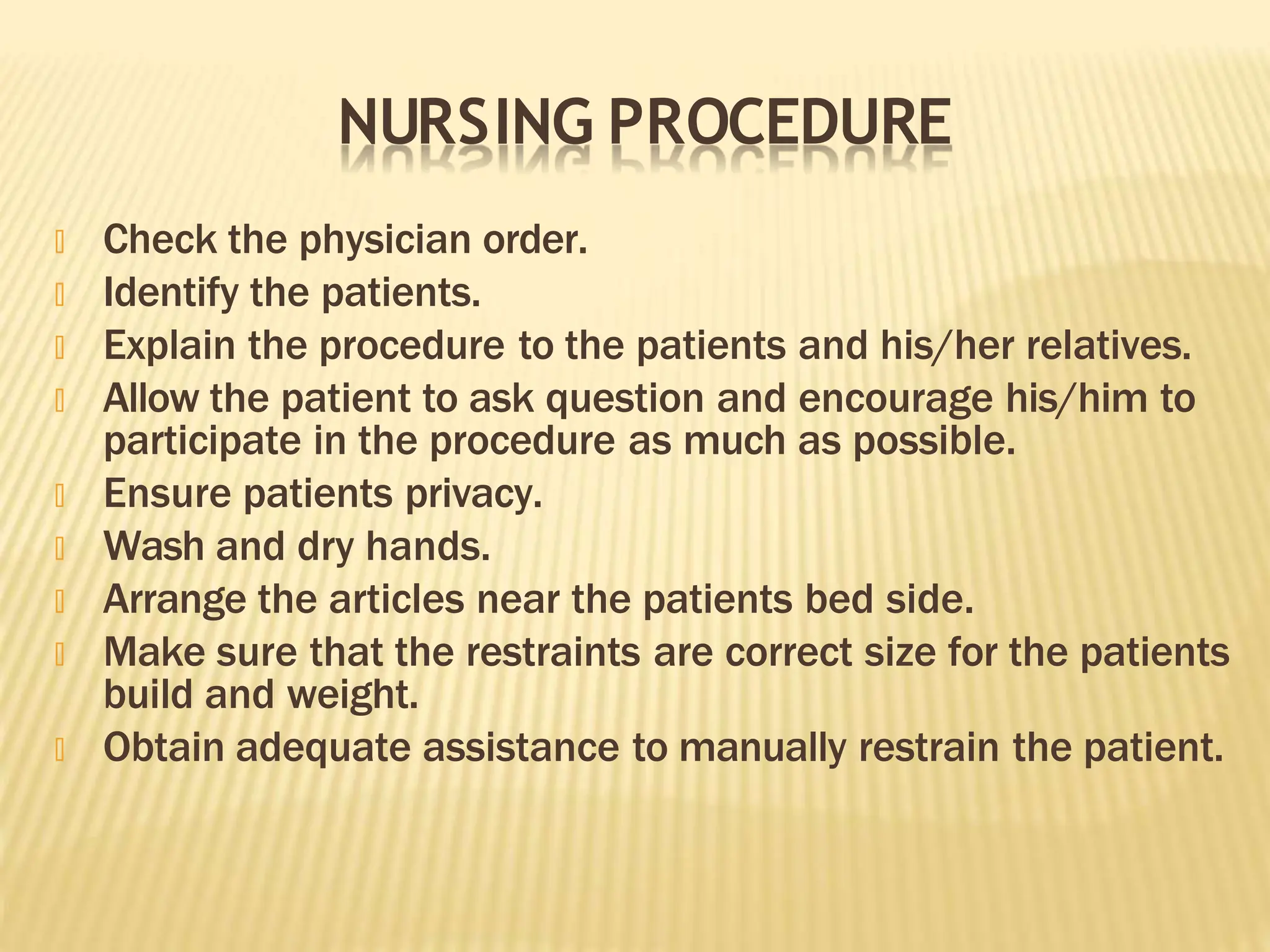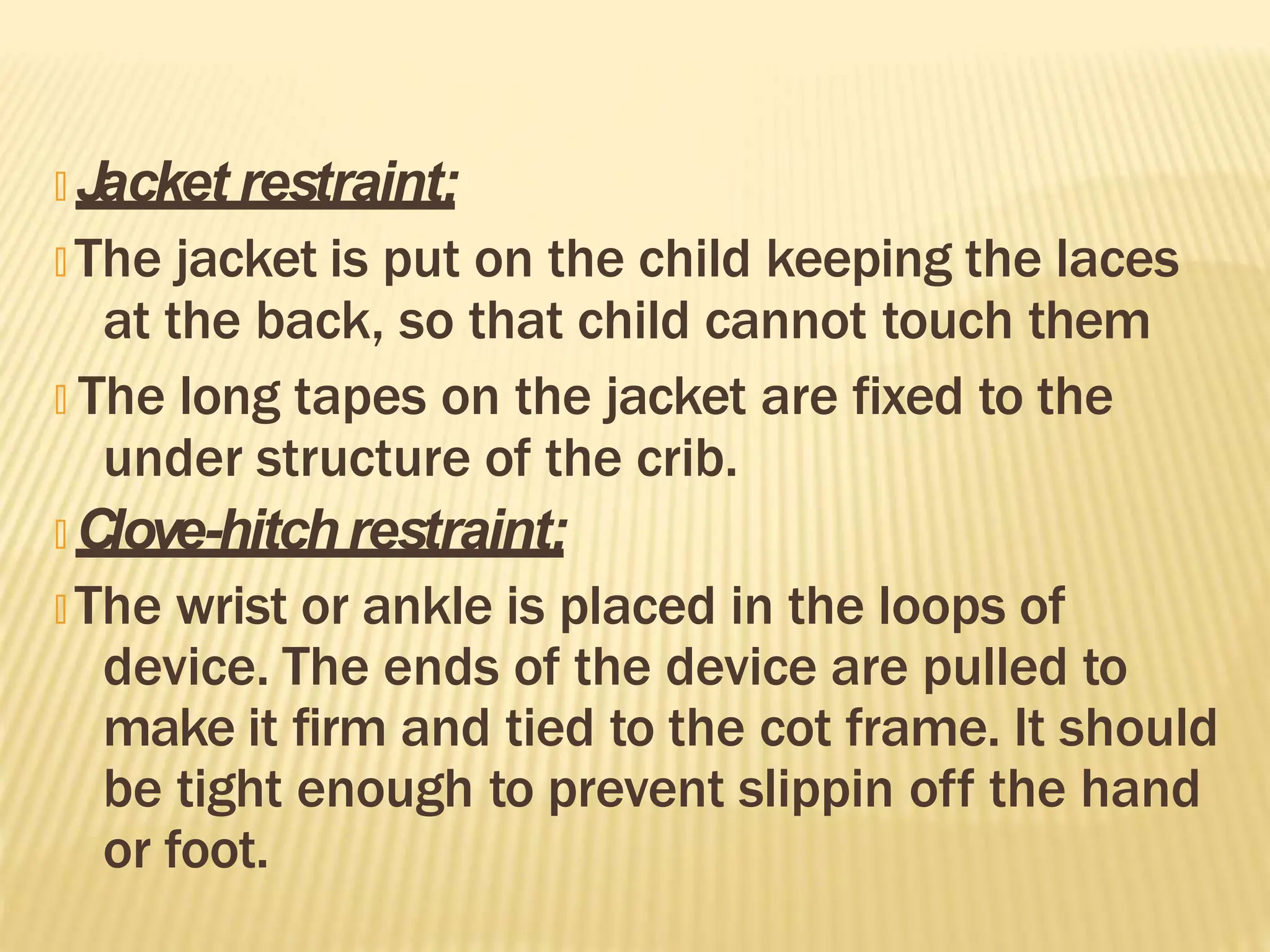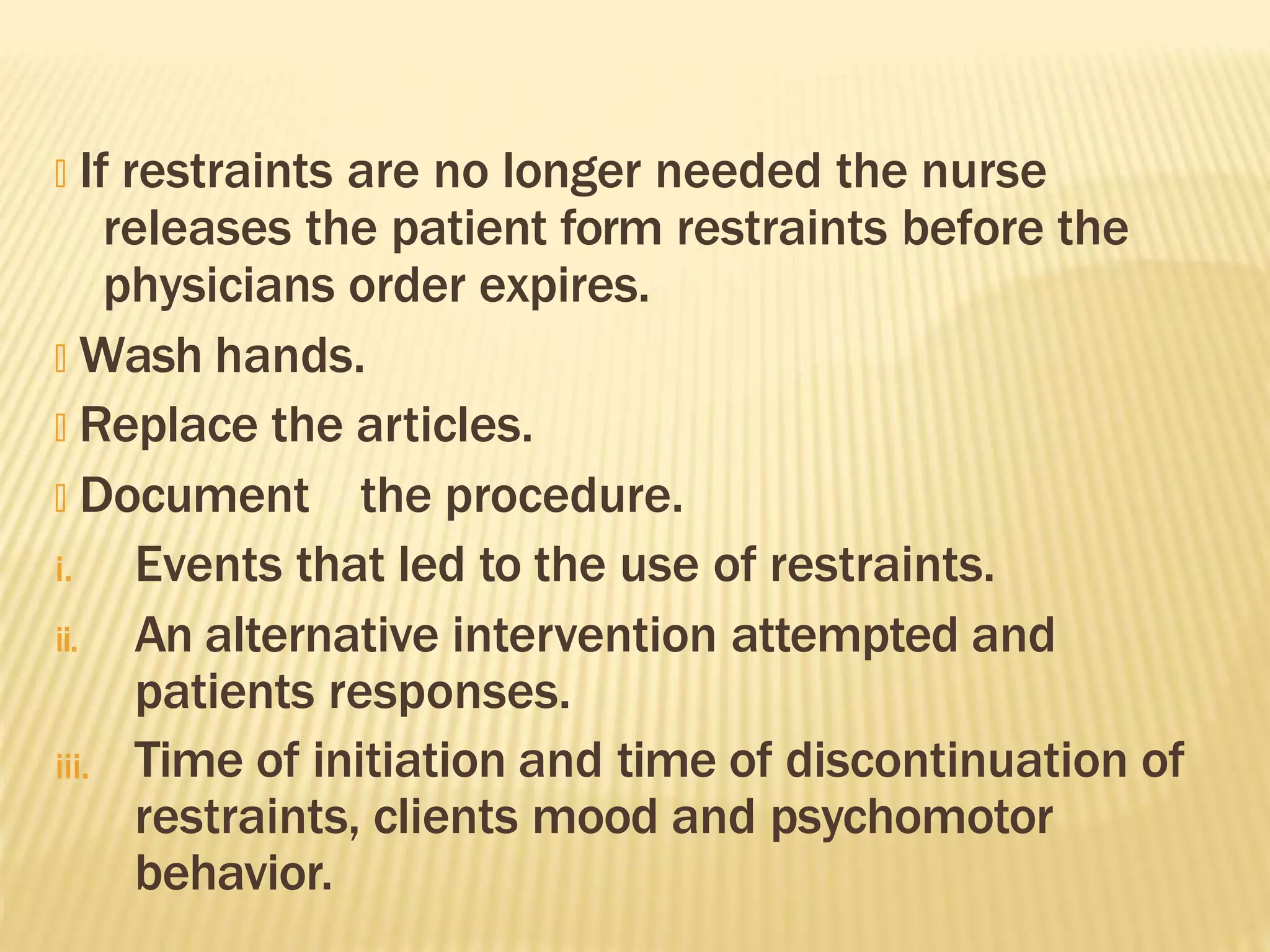Restraints are protective devices used to immobilize or restrict a patient's movement for safety purposes. Common restraints include mittens, lap belts, bed rails, and wrist/elbow restraints. Restraints aim to prevent injury to patients or others by limiting falls or interference with medical equipment. However, restraints also carry risks like tissue damage, pressure sores, and psychological impacts. Nurses are responsible for closely monitoring restrained patients, documenting their condition regularly, and discontinuing restraints as soon as it is safe to do so. Proper restraint application and removal procedures aim to balance patient safety with comfort and dignity.

